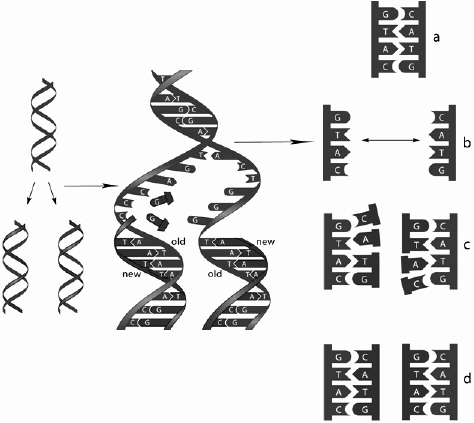A) The amount of adenine equaled the amount of thymine.
B) Different species have different proportions of adenine and guanine.
C) Nitrogen containing bases were arranged on the outside of the double helix structure.
D) The shape of the molecule could be a double helix.
E) All of these were determined.
Correct Answer

verified
Correct Answer
verified
Multiple Choice
Selecting the Exception Four of the five answers listed below are people who were involved in the discovery of the structure of DNA. Select the EXCEPTION.
A) Wilkins
B) Wallace
C) Watson
D) Franklin
E) Crick
Correct Answer

verified
Correct Answer
verified
Multiple Choice
Which scientist(s) discovered the basis for the base-pair rule, which stated that the amounts of adenine in all DNA are the same, as are the amounts of cytosine and guanine?
A) Watson and Crick
B) Beadles
C) Chargaff
D) Franklin
E) Pauling
Correct Answer

verified
Correct Answer
verified
Multiple Choice
The structure of a DNA molecule is analogous to a
A) paper clip.
B) ladder.
C) fork.
D) rope.
E) coiled spring.
Correct Answer

verified
Correct Answer
verified
Multiple Choice
Which of the following is one of Chargaff's rules about DNA structure?
A) phosphate groups are connected to sugars by covalent bonds
B) base pairs connect to each other by hydrogen bonds
C) the amounts of adenine and thymine are the same as are the amounts of cytosine and guanine
D) the DNA molecule forms into a double helix
E) the strands in a DNA molecule run in opposite directions
Correct Answer

verified
Correct Answer
verified
Multiple Choice
Body cells of human males contain
A) one X chromosome and one Y chromosome.
B) two X chromosomes.
C) two Y chromosomes.
D) two O chromosomes.
E) chromosomes X, Y, and O.
Correct Answer

verified
Correct Answer
verified
Matching
Classification . Below are five nucleotides. Match the correct nucleotide with its description.
Correct Answer
Multiple Choice
A nucleotide is made up of
A) a 5 carbon (pentose) sugar, three phosphate groups, and a nitrogen containing (nitrogenous) acid.
B) a pentose sugar, three phosphate groups, and a nitrogenous base.
C) three pentose sugars, a phosphate group, and a nitrogenous acid.
D) three pentose sugars, a phosphate group, and a nitrogenous base.
E) a pentose sugar, a phosphate group, and three nitrogenous acids.
Correct Answer

verified
Correct Answer
verified
Multiple Choice
In the nucleotide sequence ACTGG, what does C stand for?
A) cysteine
B) cytotic
C) cytosine
D) chargaff
E) cystomitosine
Correct Answer

verified
Correct Answer
verified
Multiple Choice
Butterflies Butterflies are diploid organisms. In these animals, the sex of an individual is determined by Z and W chromosomes. Use this information to answer the following question(s) . Which chromosomes are carried by a normal male butterfly?
A) ZO
B) ZW
C) WW
D) WO
E) ZWW
Correct Answer

verified
Correct Answer
verified
Multiple Choice
What does DNA ligase do?
A) breaks the hydrogen bonds between base pairs
B) seals gaps between assembled nucleotides
C) provides energy for nucleotide assembly
D) acts as an initiator to start the replication process
E) seals the ends of the replicated DNA molecule
Correct Answer

verified
Correct Answer
verified
Multiple Choice
Selecting the Exception Four of the five answers listed below are related to the structure of DNA and/or its composition. Select the EXCEPTION.
A) protease
B) double helix
C) polymerase
D) phosphate
E) deoxyribose
Correct Answer

verified
Correct Answer
verified
Multiple Choice
 Examine the figures above and answer the following question(s) . In the figure above, step "a" represents
Examine the figures above and answer the following question(s) . In the figure above, step "a" represents
A) the two parental DNA strands.
B) the two F 1 generation DNA strands.
C) the two F 2 generation DNA strands.
D) the DNA molecule to be transcribed.
E) the DNA molecule to be translated.
Correct Answer

verified
Correct Answer
verified
Multiple Choice
Which of the following is NOT true about complementary base pairing in a DNA molecule?
A) covalent bonds connect two complementary bases.
B) adenine and thymine are complements.
C) guanine and cytosine are complements.
D) double-ring nitrogen containing bases connect to single-ring nitrogen containing bases.
E) more than one of these is NOT true.
Correct Answer

verified
Correct Answer
verified
Multiple Choice
In prokaryote DNA replication, nuclotide assembly is
A) faster than eukaryotes.
B) slower than eukaryotes.
C) about the same speed as eukaryotes.
D) sometimes slower; sometimes faster than eukaryotes.
E) none of these.
Correct Answer

verified
Correct Answer
verified
Multiple Choice
Which of the following terms is NOT related to the other four?
A) amino acids
B) nucleotides
C) deoxyribose sugars
D) phosphate groups
E) nitrogen bases
Correct Answer

verified
Correct Answer
verified
Multiple Choice
Which of the following is NOT true of the effects of UV light on DNA?
A) it breaks DNA into pieces
B) it causes kinks in the DNA molecule
C) it causes the formation of nucleotide dimers
D) it causes covalent bond formation between adjacent thymines
E) it causes permanent mutations
Correct Answer

verified
Correct Answer
verified
Multiple Choice
The connection point of two sister chromatids is called the
A) chromatid.
B) chromatin.
C) centriole.
D) centrosome.
E) centromere.
Correct Answer

verified
Correct Answer
verified
Multiple Choice
Which of the following was determined by Rosalind Franklin's research?
A) DNA is a double helix
B) DNA has a phosphate backbone on the outside
C) DNA bases are arranged on the inside
D) DNA's diameter
E) all of these were determined by Rosalind Franklin's research
Correct Answer

verified
Correct Answer
verified
Multiple Choice
After DNA replication, each chromosome contains
A) two sister chromatids.
B) two sister chromatins.
C) two sister chromosomes.
D) two sister centromeres.
E) two sister centrioles.
Correct Answer

verified
Correct Answer
verified
Showing 41 - 60 of 93
Related Exams